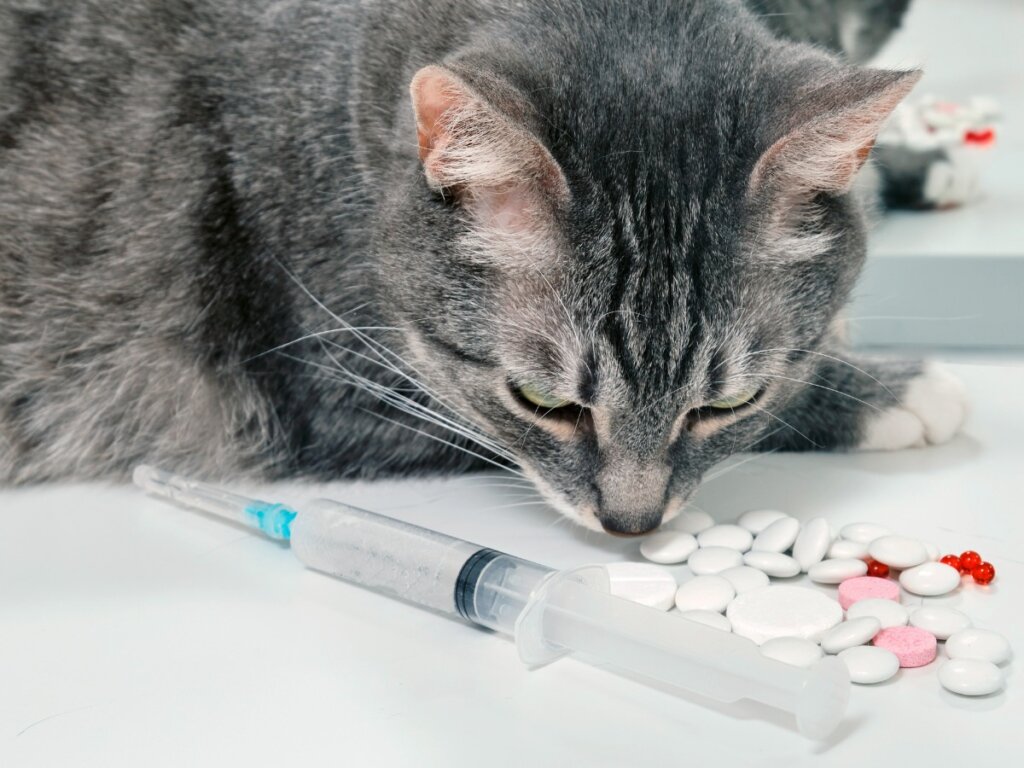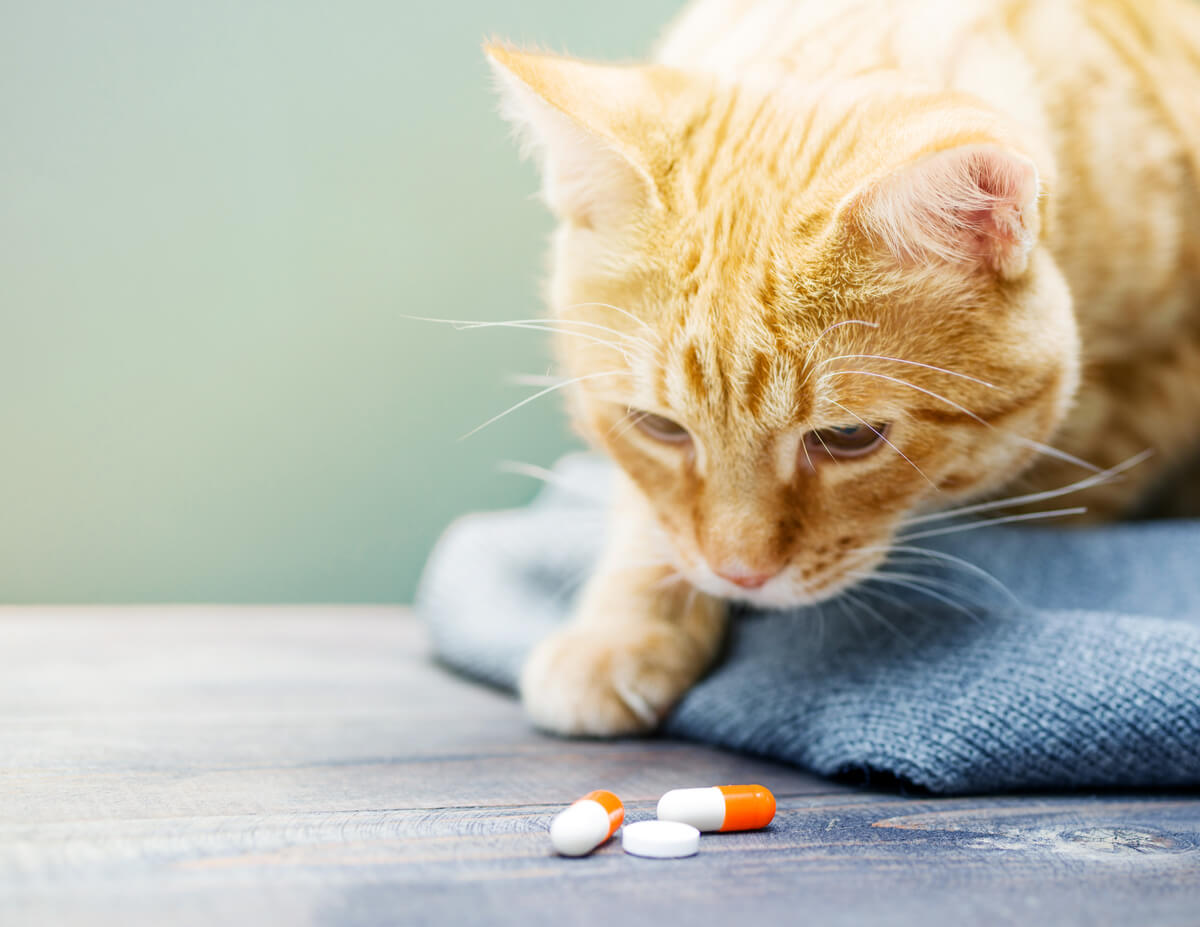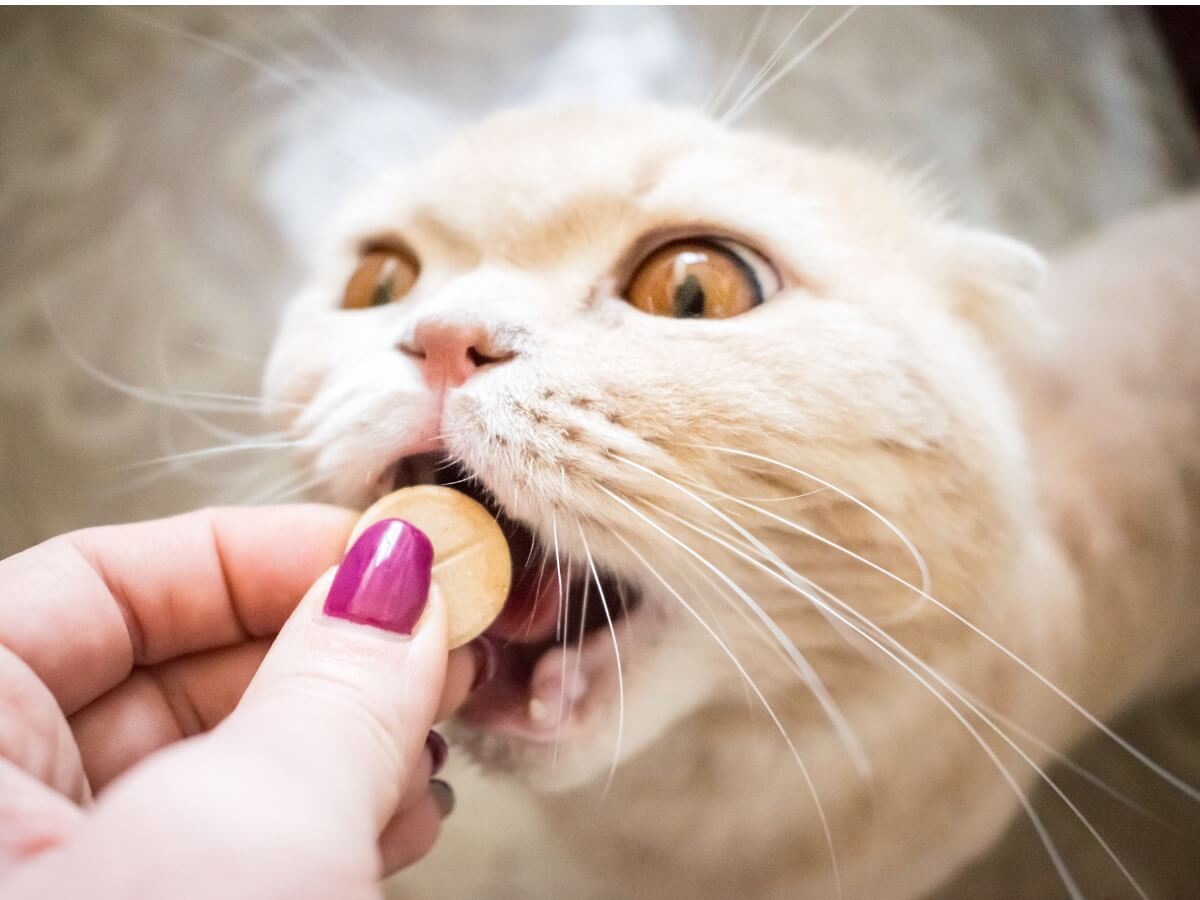Cephalexin for Cats: Uses and Side Effects

Cephalexin is an antibiotic from the group of cephalosporins, which, in turn, is part of the beta-lactam family. These drugs act in the same way as penicillin: they inhibit the synthesis of peptidoglycan in the cell wall of bacteria, thereby killing them and inhibiting their growth (bacteriolytic). Cephalexin is used in cats and dogs.
Although it’s a safe drug to use, it’s essential to make it clear that all cephalexin treatment must be endorsed by a veterinary professional. In addition, if the dosage is interrupted or taken in the wrong way, it can predispose the feline to suffer future infections. If you want to know more about this drug, keep reading.
What is cephalexin for cats?
As we have said, cephalexin is a bacteriolytic antibiotic, belonging to the group of cephalosporins. In general, this drug is used to treat epidermal, bone, lung, and kidney infections, both in dogs and cats. In any case, its use is more common in the area of the skin than in any other part of the body.
As indicated by the VCA Hospitals portal, this drug is sold under many trade names: Rilexine®, Keflex® and Vetolexin®, among others. It’s sold in the form of oral pills, chewable tablets – for dogs – and, in some regions, it can also be purchased as an oral paste.

When can cephalexin be used for cats?
Without a doubt, the most useful application of this drug in the feline world is the treatment of pyoderma. This condition arises after an infection of the skin by bacteria of the genus Staphylococcus. Normally, this group of microorganisms lives as commensals in the epidermis of the animal, but they can take advantage of a wound or other pathology to multiply.
Various causes can lead to pyoderma: injuries, hormonal failures, parasites, immune depression, anatomical defects, skin macerations, and many more. Once the microorganisms grow uncontrollably, certain symptoms appear in the feline, such as the following:
- An excessive formation of dead skin on the surface of the animal, especially on the back, near the tail.
- Small elevations or granulations on the skin, which are called miliary dermatitis.
- Hair loss in the affected area and ulcerative patches.
- Open wounds with purulent discharge, only in cases in which the infection occurs aggressively.
Studies estimate that this condition is the reason why around 20% of felines go to the vet for dermatological reasons. In other words, it’s quite a common condition, so cephalexin has invaluable use in this group of pets.
Dosage and dosage
The standard dose in cats is 10 milligrams per pound of the animal every 24 hours, although this scale may change depending on where the infection is, the route of administration, and the condition of the pet. Before establishing a course of action, consult with your vet. However, here are a few tips when using cephalexin for cats:
- Cephalexin can be given with or without food. If your cat has gastrointestinal symptoms after taking the drug on an empty stomach, try giving it the next dosage after eating. If they still don’t improve, take them to the vet.
- Oral solutions should be kept in the refrigerator and not stored for more than 14 days. Following your vet’s guidelines is essential, so ask for a dispenser or syringe before you start treating your cat.
- If your cat doesn’t accept the drug, go to the vet with them. There are ways to give it to them while minimizing stress, so don’t be afraid to ask for help.
- The treatment doesn’t have a fixed interval. Ask your vet how many doses are necessary. Under no circumstances should you stop giving your cat the antibiotic, as this can lead to worse infections in the future.
What happens if I miss a dose?
If you forget to give your cat the pill but not too much time has passed, you can administer the dose a little late without a problem. If the cat is close to the next day’s feed, then it’s better to skip the previous dose. Never give the animal two pills at a time to compensate.
What cats are unsuitable for treatment with cephalexin?
As the drug’s insert indicates, no drug is entirely safe and something can always go wrong. In any case, the dosage is strictly prohibited in those who are allergic to other penicillins and similar drugs. If this rule isn’t respected, then the cat can develop an anaphylactic shock that could end its life.
It’s necessary to use this drug with care in patients with kidney problems.
Side effects
Every drug has a series of side effects, and here are some of the side effects of cephalexin in cats:
- Expected clinical signs: Diarrhea, vomiting, and loss of appetite.
- Chronic loss of appetite: This may indicate liver failure in the animal. It’s essential to go to the vet in this situation.
- Clinical signs of an allergy: Fever, rashes, trouble breathing, anemia, and skin irritation. These signs also warrant a visit to the veterinary emergency room.
Cephalexin overdose
The most common symptom of a cephalexin overdose is vomiting. However, large overdoses can lead to irreversible kidney damage and long-term nervous system problems. If you notice that your cat doesn’tt stop vomiting and has taken more pills than it should, then take them to the vet.

Final notes
Cephalexin is a very useful drug in cats, as it can treat pyoderma and other more serious infectious conditions. In addition, it’s recommended for almost all types of cats, except those that have a history of hypersensitivity to cephalosporins or other antibiotics.
In any case, this drug must be administered intelligently, with perseverance and always under veterinary supervision. If dosing is stopped early, the effects of infection can be very damaging.
All cited sources were thoroughly reviewed by our team to ensure their quality, reliability, currency, and validity. The bibliography of this article was considered reliable and of academic or scientific accuracy.
- Cephalexin, Triangle Animal Clinic. Recogido a 15 de junio en https://triangleanimalclinic.net/storage/app/media/Plumbs/Cephalexin.pdf
- Cephalexin, VCA Hospitals. Recogido a 15 de junio en https://vcahospitals.com/know-your-pet/cephalexin
- Silley, P., Rudd, A. P., Symington, W. M., & Tait, A. J. (1988). Pharmacokinetics of cephalexin in dogs and cats after oral, subcutaneous and intramuscular administration. The Veterinary Record, 122(1), 15-17.
- Crosse, R., & Burt, D. G. (1984). Antibiotic concentration in the serum of dogs and cats following a single oral dose of cephalexin. The Veterinary Record, 115(5), 106-107.
- Thornton, J. R., & Martin, P. J. (1997). Pharmacokinetics of cephalexin in cats after oral administration of the antibiotic in tablet and paste preparations. Australian veterinary journal, 75(6), 439-440.
